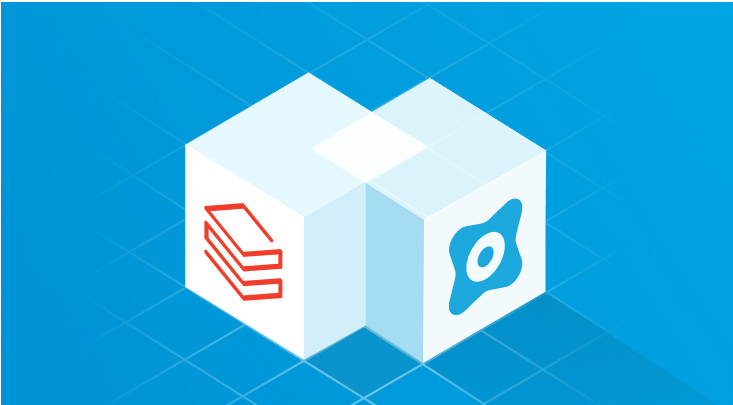A leading financial services company faced compliance issues because of unreliable metadata. Their home-grown data catalog lacked context and lineage tracking, leading to challenges in assuring trusted data for their new banking application. This kind of situation is not new in the modern data-driven business landscape.
Due to the intricate nature of enterprise data systems, data often originates from various sources, undergoes numerous transformations, and is eventually routed to multiple destinations. The ability to trace this journey of data from its origin to its final destination is more crucial than ever to deliver trusted and compliant data.
This is what data lineage is all about. The growing importance of data lineage in modern enterprises comes from its ability to provide a clear, comprehensive view of data flow, transformations, and usage across an organization. Traditional data lineage techniques often fall short in complex or opaque environments, as the financial services company discovered. Hence, the emergence of an innovative approach—inferred lineage.
As the name indicates, this type of lineage is built indirectly. This blog introduces the concept of inferred lineage and explores its key use cases.
Understanding Inferred Lineage
Inferred lineage is an advanced method of tracking data movement and transformation using AI and ML algorithms. It uses pattern analysis and matching, along with clustering techniques, to infer how data is transformed and moved across enterprise systems.
Unlike traditional lineage methods that rely on parsing existing code (typically limited to SQL), analyzing logs or manual metadata documentation, inferred lineage automatically detects and maps data relationships across various systems and processes. This approach eliminates the barrier presented by opaque systems to document lineage. It can also help you gain a deeper understanding of lineage for complex transformations and non-linear data flows. Moreover, the lack of documented lineage records is no longer an obstacle, and inferred data lineage can deliver you the required transparency, compliance, and trust.
The Need for Inferred Lineage
When you manage modern enterprise data systems, you deal with large volumes of data, complex data architecture, numerous data sources and destinations, and complex transformations. This situation makes it hard to create and maintain accurate lineage information. Inferred lineage addresses these challenges by offering an automated, efficient, and scalable way to capture and visualize data movements.
How Inferred Lineage Works
Inferred lineage leverages advanced algorithms to analyze data patterns, metadata, and system logs. It uses ML to identify relationships between data elements across different systems, even when explicit documentation is missing. This dynamic approach enables continuous updates to lineage information as data and systems evolve.
The process of inferred lineage focuses on the following:
- Data transformations, such as filtering and aggregating.
- Data validations, such as incomplete data.
- Data enrichment, such as integrating additional data sources to create a more detailed profile of each customer.
- Data movement, such as loading data into a database and streaming data to and from services.
Automated inferred lineage saves you time and resources while improving the accuracy and coverage of your data systems.
Key Benefits of Inferred Lineage
Inferred lineage brings several benefits to your data management practices, enhancing efficiency, accuracy, and reliability. Here are some of the key benefits:
- Improved Data Governance and Compliance: Inferred lineage gives you a comprehensive view of data flows, helping you meet regulatory requirements more efficiently.
- Enhanced Data Quality and Reliability: Inferred lineage helps you identify and fix data quality issues at their source by tracking data relationships (between two or more columns).
- Faster Impact Analysis: When data changes occur, inferred lineage can quickly assess downstream impact, reducing the risk of unintended consequences.
- Better Decision-Making: A clear understanding of data provenance empowers you to make trusted decisions based on reliable data.
Use Cases for Inferred Lineage
Inferred lineage offers significant benefits across industries by providing an understanding of data flow and relationships, and deeper insights into legacy data systems or those where traditional lineage falls short. This information can be utilized in a wide range of use cases.
- Data Migration and Modernization: Inferred lineage helps you map legacy systems to new architectures, minimizing risks to ensure streamlined transitions.
- Regulatory Compliance: For data privacy regulations like GDPR or CCPA, inferred lineage helps you track personal data across systems and generate audit trails.
- Data Quality Management: You can track data transformations back to its sources to quickly identify and address quality issues.
- Business Process Optimization: Understanding data flows helps you streamline business processes, identify bottlenecks and inefficiencies, and take timely action for optimization.
Inferred Lineage from Securiti
The Inferred Lineage provided by Securiti is unique. It searches for replicated and transformed data across table columns and leverages ML algorithms to discover possible lineage relationships. It can handle the following relationships among tables/columns:
- Data transformations, such as normalization, clean-up, or standardization.
- Multiple source tables merging column-wise into one target table.
- Multiple source tables merging row-wise into one target table.
- One source table being used to generate multiple target tables.
- Handling of common data such as boolean columns that can lead to false positives.
Securiti's Inferred Lineage helps expand lineage to opaque ETL processes and handle scenarios where lineage is not easily extractable from processes coded in COBOL, Java, and Python. It effectively removes the limitation of lineage extraction using third-party plugins or SQL parsing.
How the Financial Services Company Leveraged Inferred Lineage
To address the issues of manual and unreliable data lineage, the financial services company implemented Securiti's comprehensive solution, which included Inferred Lineage, Data Discovery, Data Catalog, and Workflow Orchestration.
The automated inferred lineage significantly enhanced their data governance and closed compliance gaps. After implementing the Securiti solution, the company not only achieved improved compliance but also attained a high confidence rating in matching data producers to data consumers, resulting in a substantial cost reduction of $10.5 million.
The improved data governance enabled the company to pursue growth strategies more effectively. Additionally, it provided the necessary support for an aggressive rollout of their new application. This holistic improvement in data management and governance positioned the company for better operational efficiency and strategic expansion.
Key Takeaways
Data lineage is crucial for tracing data's journey from its origin to its final destination, ensuring trusted and compliant data. However, unreliable metadata and lineage tracking can lead to compliance issues. Traditional data lineage methods often fail in complex environments, where inferred lineage provides an advanced method of tracking data movement and transformation.
Inferred lineage uses AI and ML to automatically detect and map data relationships across systems, reducing errors and providing a deeper understanding of data flows, transformations, and validations. It can help improve data governance and compliance, data quality and reliability. It can also deliver faster impact analysis and support better decision-making.
Securiti’s Inferred Lineage handles complex transformations and relationships, even in challenging scenarios, supporting safe and compliant data use.
Request a demo to learn more.













